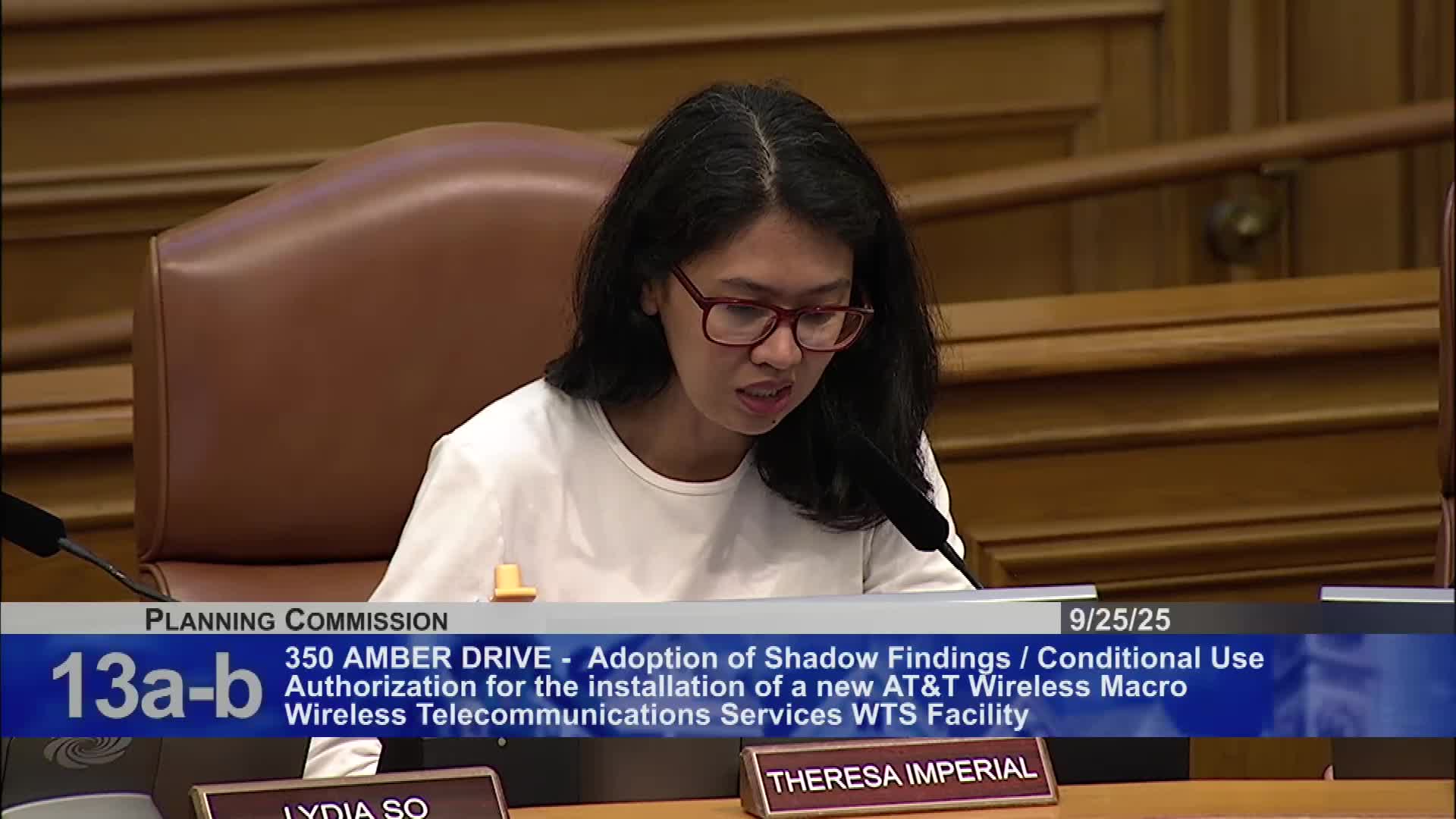San Francisco Planning Commission Approves SF Gateway Project for Bayview Hunters Point
September 25, 2025 | San Francisco City, San Francisco County, California
This article was created by AI summarizing key points discussed. AI makes mistakes, so for full details and context, please refer to the video of the full meeting. Please report any errors so we can fix them. Report an error »

In a recent San Francisco government meeting, city officials grappled with a contentious proposal for a new telecommunications tower, highlighting the ongoing tension between community needs and technological advancements. The discussion centered around an application from AT&T to install a new cell site in Glen Park, a neighborhood that has expressed overwhelming opposition to the project.
Commissioners noted that nearly all community feedback received was against the installation, with 83 letters opposing the project compared to only 13 in support. This strong local sentiment raised significant concerns about the desirability of the tower in the neighborhood. Commissioner McGarry emphasized the importance of considering the community's voice, stating, "100% of the neighborhood coming saying no" should weigh heavily in their decision-making process.
Despite the community's resistance, the need for improved cell coverage in the area was a recurring theme. The existing coverage map presented during the meeting revealed significant gaps in service, particularly in emergency situations where reliable communication is critical. Commissioner Campbell pointed out the growing reliance on cell phone coverage, especially during disasters, and acknowledged the necessity of addressing these gaps.
The discussion also touched on potential alternatives, including co-location with existing telecommunications infrastructure. However, the feasibility of these options was questioned due to physical limitations and the need for a clear line of sight for effective service. The commissioners debated the implications of federal regulations that limit local authority over such installations, particularly regarding electromagnetic frequency concerns.
Ultimately, the commission voted on a motion to deny the project, which narrowly failed with a 4-3 vote. Instead, a motion to approve the project was passed, albeit with hesitance from some commissioners who recognized the community's concerns but felt compelled by the necessity of improved coverage.
The meeting concluded with a commitment to further explore the implications of the decision and the potential for future community engagement. As the city moves forward, the balance between technological needs and community preferences remains a critical issue, underscoring the complexities of urban planning in a rapidly evolving digital landscape.
Commissioners noted that nearly all community feedback received was against the installation, with 83 letters opposing the project compared to only 13 in support. This strong local sentiment raised significant concerns about the desirability of the tower in the neighborhood. Commissioner McGarry emphasized the importance of considering the community's voice, stating, "100% of the neighborhood coming saying no" should weigh heavily in their decision-making process.
Despite the community's resistance, the need for improved cell coverage in the area was a recurring theme. The existing coverage map presented during the meeting revealed significant gaps in service, particularly in emergency situations where reliable communication is critical. Commissioner Campbell pointed out the growing reliance on cell phone coverage, especially during disasters, and acknowledged the necessity of addressing these gaps.
The discussion also touched on potential alternatives, including co-location with existing telecommunications infrastructure. However, the feasibility of these options was questioned due to physical limitations and the need for a clear line of sight for effective service. The commissioners debated the implications of federal regulations that limit local authority over such installations, particularly regarding electromagnetic frequency concerns.
Ultimately, the commission voted on a motion to deny the project, which narrowly failed with a 4-3 vote. Instead, a motion to approve the project was passed, albeit with hesitance from some commissioners who recognized the community's concerns but felt compelled by the necessity of improved coverage.
The meeting concluded with a commitment to further explore the implications of the decision and the potential for future community engagement. As the city moves forward, the balance between technological needs and community preferences remains a critical issue, underscoring the complexities of urban planning in a rapidly evolving digital landscape.
View full meeting
This article is based on a recent meeting—watch the full video and explore the complete transcript for deeper insights into the discussion.
View full meeting
